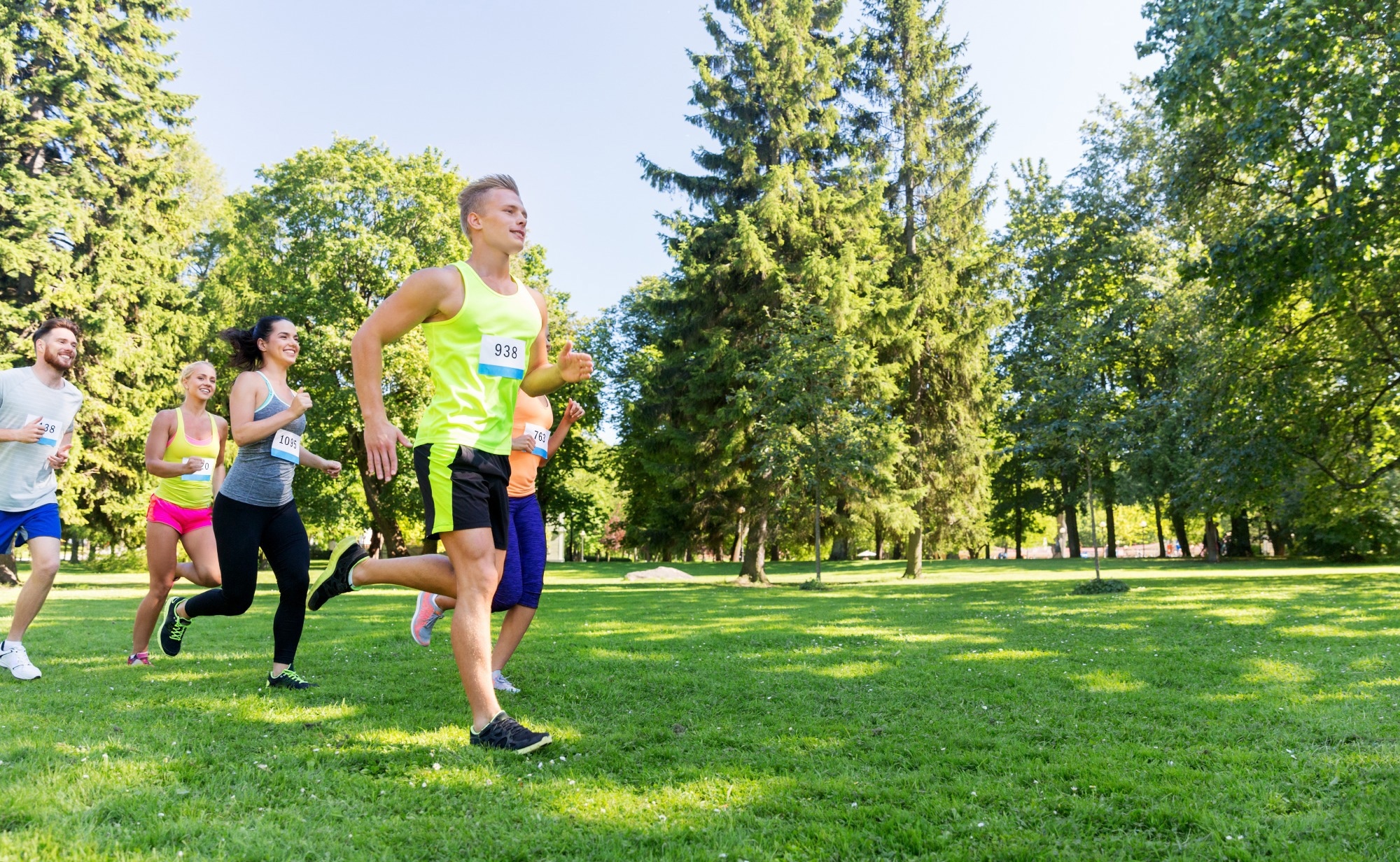Researchers have uncovered how the simple act of joining a weekly 5K parkrun can lead to improved happiness, health, and social value, showing that small steps can make a big difference to national wellbeing.
 Study: A generic model of life satisfaction: The case study of parkrun. Image credit: Ground Picture/Shutterstock.com
Study: A generic model of life satisfaction: The case study of parkrun. Image credit: Ground Picture/Shutterstock.com
In a recent study published in PLOS Global Public Health, researchers developed a generic model of life satisfaction using a survey of parkrun.
Research on subjective well-being has substantially increased in recent years. The Office for National Statistics (ONS) in the United Kingdom (UK) has adopted four indicators to quantify well-being: happiness, anxiety, life satisfaction, and a feeling of things being worthwhile. Among these, life satisfaction tends to be preferred by the ONS when estimating population well-being.
Parkrun is a weekly, timed five-kilometer walk or run, which the World Health Organization recommends as an initiative that can introduce the benefits of physical activity to many people. A study of parkrun demonstrated the benefits of walking or running on health and well-being. Another reported that parkrun attracted people less associated with running, such as females and the least active individuals.
About the study
In the present study, researchers developed a model of life satisfaction based on parkrun participation. In autumn 2024, all UK parkrunners aged ≥ 18 who participated in one or more parkruns in the past year were sent a survey. The survey asked questions on life satisfaction, health status, gender, activity level, the impact of parkrun as a runner/walker or volunteer on 19 or 20 well-being and health outcomes, and how running/walking or volunteering was associated with life satisfaction.
Benefit-cost ratios were computed to determine the cost-effectiveness of parkrun. Two costs were considered: the cost of park usage and the cost of running the parkrun organization. The reliability of self-reported survey items was assessed using Cronbach’s alpha. Multiple stepwise linear regressions assessed the impacts following walking/running and volunteering, with life satisfaction as the dependent variable and other impacts as independent variables.
In addition, multiple non-linear regression models of life satisfaction were developed, with life satisfaction change as the dependent variable. Independent variables included health status, age, activity at registration, index of multiple deprivation (IMD) quartile, number of parkruns, number of volunteering occasions, and activity change between registration and survey.
Findings
In total, 78,662 surveys were completed; when weighted to 969,478 parkrunners, 80.9% were walkers/runners, while 19.1% were volunteers. On average, 39 parkruns were completed as a walker/runner and 6.4 as a volunteer. Participants were more likely to be males, aged 16–49, and from less deprived neighborhoods. Most parkrunners were active at least three days weekly at (parkrun) registration and had very good or good health status at the survey.
The reliability of survey items was scored at 0.935. The top three impacts of being a walker/runner were associated with improvements in the sense of personal achievement for 90% of participants, fitness for 88%, and physical health for 85%. Notably, 76% reported that life satisfaction was improved or positively affected through participation as a walker/runner.
As a volunteer, 73% reported improvements in life satisfaction. The average life satisfaction was estimated at 7.545. The mean impact of parkrun on life satisfaction was 0.454 following participation as a walker/runner and 0.439 for participation as a volunteer. The overall value for the entire sample was 0.453. This “additionality” value indicated that approximately 45.3% of participants observed a change in life satisfaction that could be attributed to parkrun activities (running, walking, or volunteering).
Life satisfaction change was associated with mental well-being, happiness, sense of personal achievement, and opportunity to have fun with large or very large effects following participation as a walker/runner or volunteer. Females were less likely to report improvements, whereas older individuals were more likely to report improvements. Health status had very large effects on life satisfaction, while age had small effects.
Gender and number of runs/walks per person had a significant effect, activity change between registration and survey had a small effect, and activity at registration had a moderate effect. The number of parkruns as a volunteer was insignificant. The benefit of completing 39 parkruns as a walker/runner was about £75 per individual.
The increase in activity between registration and survey of 0.31 was estimated at £137 per individual. The change in health status of 3% was estimated at £477 per individual. The benefit-cost ratios for the number of walks/runs completed, activity change, and health status change were 5.8, 10.6, and 37, respectively. It was 53.5 when all three variables were considered.
The study applied the UK Government’s WELLBY (Wellbeing-Adjusted Life Year) approach, which assigns a monetary value to changes in life satisfaction to estimate social benefits.
Conclusions
Life satisfaction was strongly associated with health status and weakly with the number of parkruns completed and activity change between registration and survey. Age, gender, IMD, and activity at registration altered life satisfaction. Impacts strongly associated with a change in life satisfaction were happiness, mental well-being, opportunity to have fun, and sense of personal achievement.
The estimated benefits of parkrun to the UK economy were £668 million in 2024.
The authors emphasized that the study was cross-sectional, so these results indicate associations rather than direct causation between parkrun participation and changes in life satisfaction.
Download your PDF copy now!